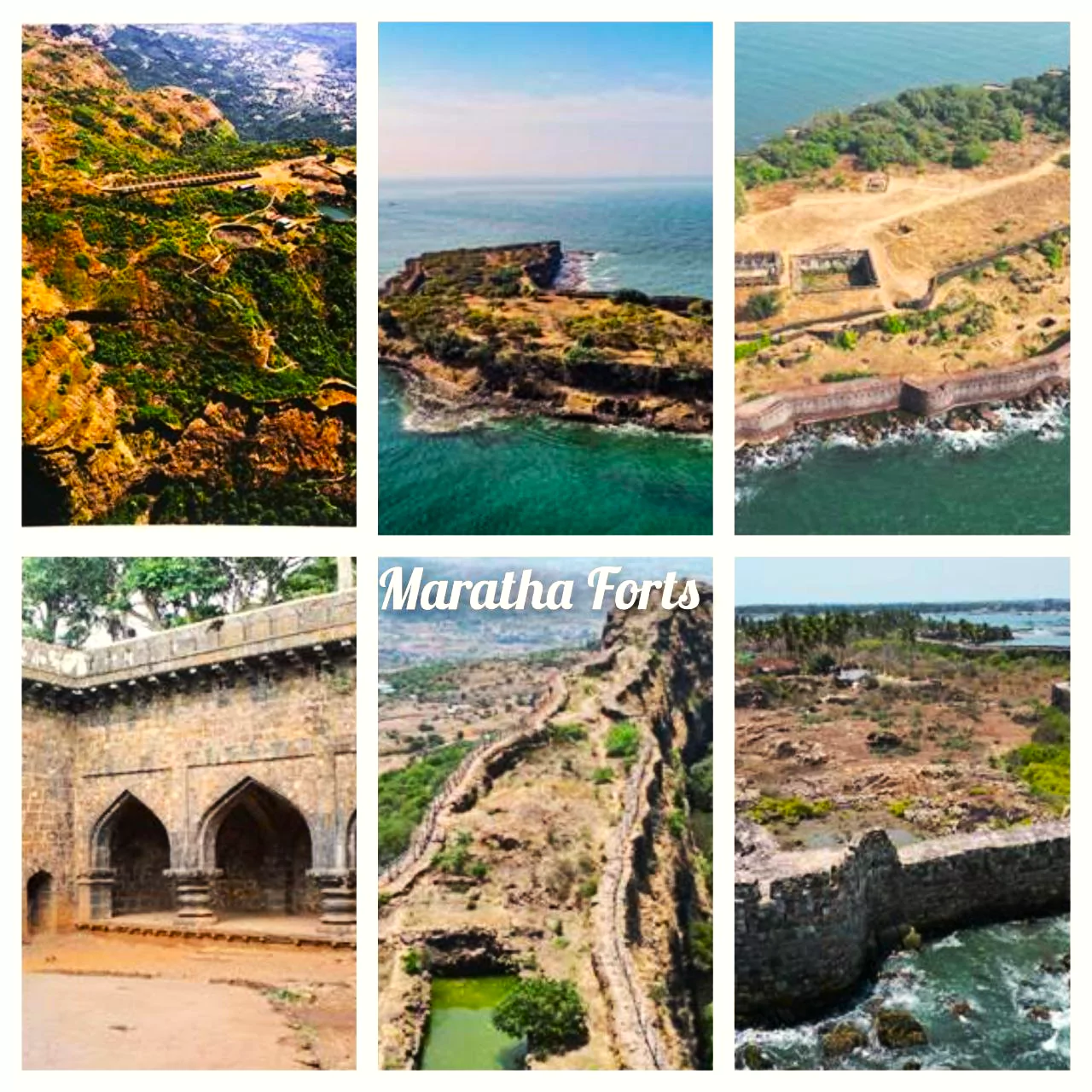Context:
India has put “Maratha Military Landscapes of India” as its nominee for inclusion in the UNESCO World Heritage List for 2024-25.
India Nominates ‘Maratha Military Landscape’ for UNESCO World Heritage List 2024-25

- The Maratha Military Landscapes of India, crafted between the 17th and 19th centuries, embody an exceptional fortification and military system conceptualized by the Maratha rulers.
- This nomination comprises twelve distinct elements, including
- Hill Forts: Salher, Shivneri, Lohgad, Raigad, Rajgad, and Gingee forts,
- Hill-forest fort: Pratapgad,
- Hill-plateau fort: Panhala,
- Coastal fort: Vijaydurg &
- Island forts: Khanderi, Suvarnadurg, and Sindhudurg.
- Spread across varied geographical and physiographic regions, these components collectively highlight the strategic military prowess of the Maratha rulers.
About The Military Landscapes of the Marathas
- The Maratha military landscape was established during the reign of Chhatrapati Shivaji Maharaj, in 1670 CE and persisted through successive rulers until 1818.
- Significance:
-
- Strategic Utilization of Terrain: These networks exemplify how the existing terrain was utilized by the Maratha army to develop guerrilla warfare strategies.
- These strategies were instrumental in countering the imperial might of the Mughals on the landward side and European coastal powers from the seaward side.
- A Unique Military Legacy: In the context of India’s military landscape, the Maratha Empire’s warfare strategy emerges as a unique and noteworthy example with the potential to be showcased to the world.
Criteria under World Heritage List Nomination by UNESCO: The nomination process for the World Heritage List involves two categories: Cultural and Natural criteria.
United Nations Educational, Scientific and Cultural Organization (UNESCO)
- It is a specialized agency of the United Nations.
- Established in 1945.
- Headquartered in Paris.
- Dedicated to fostering international collaboration, UNESCO strives to promote peace and security by advancing educational, scientific, and cultural reforms.
- With 194 member states and 12 associate members, UNESCO counts India among its founding members.
|
- The Maratha Military Landscapes of India fall under the cultural criteria category.
- There are six criteria (i to vi) for cultural sites and four criteria (vii to x) for natural sites to be considered for inclusion in the World Heritage List.
- The Maratha Military Landscapes of India is nominated under three specific cultural criteria:
- Criterion (iii): Demonstrating a unique or exceptionally significant testimony to a cultural tradition or civilization, whether living or extinct.
- Criterion (iv): An outstanding example of a specific type of building, architectural or technological ensemble, or landscape that illustrates significant stages in human history.
- Criterion (vi): Directly or tangibly associated with events, living traditions, ideas, beliefs, or artistic and literary works of outstanding universal significance.
UNESCO-Recognised Sites in India At Present
- India is home to 42 UNESCO World Heritage Sites, among these, 34 are designated as Cultural sites, 7 as Natural sites, and 2 as mixed sites, each acknowledged for their exceptional universal value to humanity.
- Recently UNESCO added Shantiniketan, the 41st UNESCO World Heritage Site in India and the inscription of the 13th-century sacred ensemble of temples of the Hoysala rulers — the famed temples of Belur, Halebid and Somananthpura in Karnataka — into the World Heritage list making India’s total sites on the World Heritage list as 42.
Also Read: Santiniketan World Heritage Site
News Source: PIB
![]() 30 Jan 2024
30 Jan 2024

